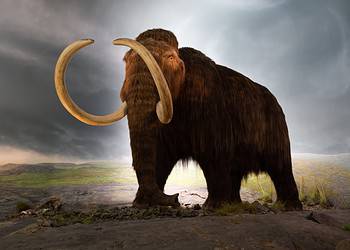
During the Cretaceous, the dinosaurs were in their heyday, whereas mammals were confined to certain ecological niches. Usually, they weren’t bigger than a modern mouse. On the island of Madagascar, however, ancient mammals were allowed to evolve in weird directions. Such is the case of Adalatherium hui, a housecat-sized creature with a mosaic of features, distinct from other mammals that we know of.
The ‘oddest of the odd’
Adalatherium literally means “crazy beast” in Greek, while hui is a nod to Yaoming Hu, a Chinese paleontologist renowned for his work on early mammals who passed away in 2008.
The name is fitting since the ancient mammal “bends and even breaks a lot of rules,” said lead researcher David Krause, curator at the Denver Museum of Nature & Science.
“Knowing what we know about the skeletal anatomy of all living and extinct mammals, it is difficult to imagine that a mammal-like Adalatherium could have evolved,” he added.
The fossils were found preserved in pristine condition in a Mesozoic geological formation in northwestern Madagascar.

Although it may look like a small badger on the outside, Adalatherium had a mix of never-before-seen features. ‘Behind the hood’, paleontologists found that the ancient mammal had more vertebrae in its vertebral column than any of its contemporaries. Its leg bones were strangely curved and its peculiar teeth haven’t been encountered in any other mammal, living or extinct.
“Trying to figure out how it moved is nearly impossible because, for instance, its front end is telling us a different story than its back end,” said Simone Hoffmann of the New York Institute of Technology, a co-author of the study.
What’s more, the 3.1-kg-creature had a nasal cavity unlike any other mammal before it. It had more holes — which served as passageways for nerves and blood vessels — on its face than any known mammal.
Adalatherium belongs to a lesser-known group of mammals known as Gondwanatheria. This rare group of mammals was only known from the ancient supercontinent of Gondwana and previous members were described based on a single skull and isolated jaws and teeth.
The discovery of a complete Gondwanatherian specimen now enables scientists to understand the early evolution of this strange group of extinct mammalian species in the southern hemisphere.
“Gondwanatherians were first thought to be related to modern-day sloths, anteaters, and armadillos but now are known to have been part of a grand evolutionary experiment, doing their own thing, an experiment that failed and was snuffed out in the Eocene, about 45 million years ago,” Krause said.
According to the study published in the journal Nature, the plate tectonics of Gondwana offer hints as to how this bizarre mammal evolved.
“Adalatherium hui was found in rocks dated to near the end of the Cretaceous period, at 66 million years ago. Madagascar, with the Indian subcontinent attached to the east, separated from Africa over a hundred million years before and finally became isolated as an island in the Indian Ocean when the Indian subcontinent detached at approximately 88 million years ago and drifted northward,” Dr. Krause said.
“That left the lineage that ultimately resulted in Adalatherium hui to evolve, isolated from mainland populations, for over 20 million years — ample time to develop its many ludicrous features.”






